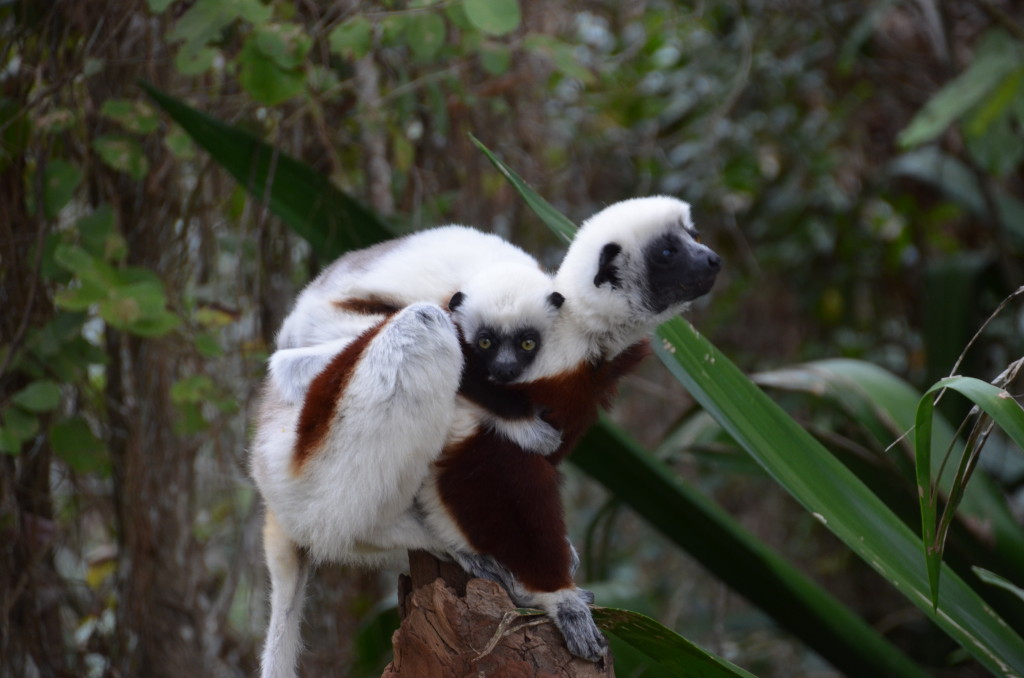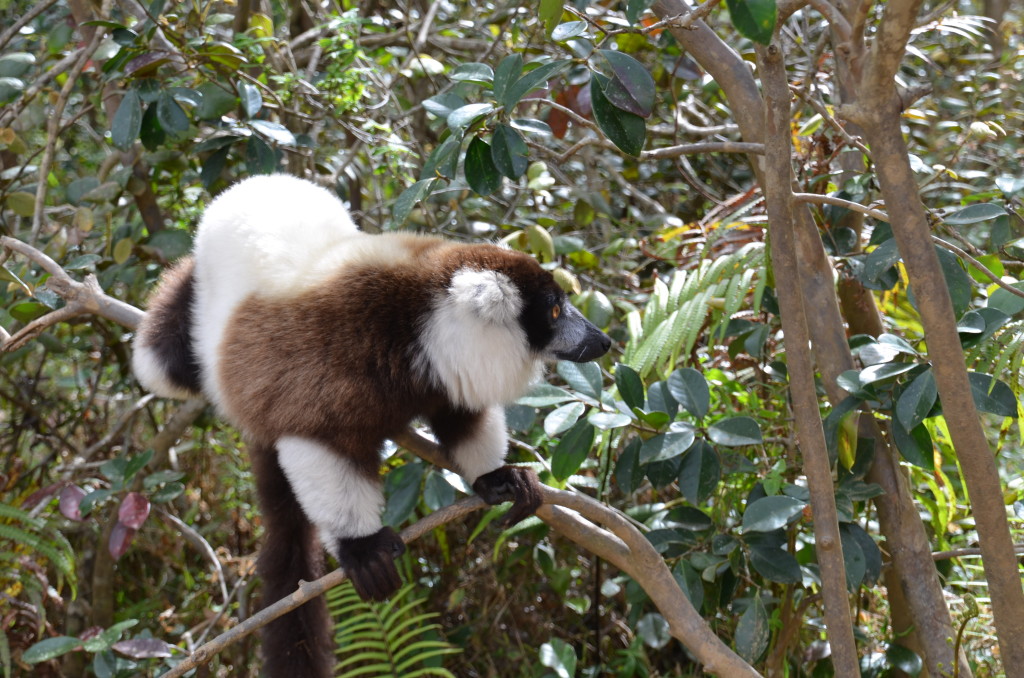Lemur Conservation Network – Eco Interview with Lynne Venart
When was your organization founded? Please tell us a bit about its mission, goals…
We are a very new organization; we began social media in December 2014, and just launched our website in February 2015! The website launch marked the one year anniversary of the lemur action plan, published in the journal Science. This action plan was authored by over 100 international primatologists from the IUCN Species Survival Commission Primate Specialist Group, and targets 30 priority sites across Madagascar with urgent conservation strategies aimed to save lemurs from extinction. The plan was developed by the key minds in lemur conservation, but it has yet to be fully funded.
That’s where the Lemur Conservation Network comes in. We formed to raise awareness about the importance of lemur conservation, and to encourage everyone to help. Our network unites over 40 organizations working on the ground in Madagascar to protect the land and its unique species. We aim to educate the public about Madagascar’s unique biodiversity, and urge all friends of lemurs, conservation, and the earth to support the cause and the projects in the action plan. We embrace all lemur fans, no matter your age, educational background, or location. It’s important to engage everyone who is curious about science and these fascinating creatures: we need more cheerleaders for conservation!
What is your educational background and what led to creating this organization?
I come to lemur conservation from a very different background than my colleagues at the Lemur Conservation Network, who are all PhD scientists. I have been a consultant for a variety of nonprofit organizations in branding, marketing, and web design for over 15 years.
And there is no cause I care more about than lemur conservation. I’ve been fascinated by lemurs and Madagascar for almost 20 years because of the extreme biodiversity on the island. I saw a unique need in lemur conservation for my professional skill set. A lot of people don’t know much about Madagascar or that the lemurs and other animals that inhabit it are facing an extinction crisis. A lot of people also don’t know just how cool these animals are! It can be difficult for scientists and conservation leaders to speak in a way that your average person will understand and find interesting. I bridge the gap between the science and the general public.
What are some challenges you have faced and how did you deal with them?
At first, it was difficult for our member organizations to understand what we wanted to do with the Lemur Conservation Network. In essence, we are a member organization, but we do not accept fees from our members because we want all of them to be equal, and we don’t want to take funds away from their important work on the ground in Madagascar. I think it was difficult at first for people in the field to understand that we existed because we wanted to help them by promoting their work and gaining more lemur fans who will support them.
Since I was not a known person in the field (my nonprofit consulting has been in a variety of fields like health care, education, and community engagement, but not lemur conservation), it was just so out of the blue.
It helped that, before much work had been done on the project, I gained the support of the IUCN Primate Specialist Group who published the lemur action plan. I knew it was important to have the backing of respected scientists in order to be taken seriously. They also guided the project a lot in the beginning to ensure that it would be useful for organizations on the ground. Their help was invaluable.
What can people do to help? Donate, and contribute to your cause? Other ideas?
At the Lemur Conservation Network, we recognize that we need everyone’s help to protect lemurs and their habitat! We thrive on participation.
How you can help:
- Support conservation in Madagascar and the lemur action plan by donating to one of our member organizations.
- Organize charity events in your area for us or one of our member organizations.
- Learn about volunteer opportunities that support conservation in Madagascar on our website.
- Read our blog to learn more about lemurs, life as a scientist, and more.
- Get inspired and tell your friends!
How do you reach your targeted audience? Is it through your website, advertising or social media or another route? Which is most effective and why?
We have an active social media presence on Facebook and Twitter, where we share news about lemurs and Madagascar, publicize our blog posts, and share information about lemur science and quick facts about various lemur species. We also have a robust photo archive from our members. There are over 100 species of lemur, and tons of unique chameleons, frogs, geckos, birds, and plant species in Madagascar, so there’s a lot of material to pick from!
How do you keep the audience engaged over time?
Our blog is key in engaging our audience. We have posts from scientists working on the ground in Madagascar, but also from zookeepers, travelers, and high school students with a passion for conservation. This variety of viewpoints keeps the content fresh and appealing.
Tell us about your events around the world and some of the campaigns you have started.
Our launch party in March in Washington, DC welcomed over 150 guests. We had a ton of really fun raffle prizes, like lemur ties, handmade crafts from Madagascar, and even lemur bobbleheads! At our launch, we randomly selected two member organizations to receive donations at the event, and raised over $1,000 for them!
We also hold networking happy hours around the world. Our first was recently in Washington, DC, and we have two more scheduled for the coming months at science conferences around the world. We also recently participated in a Discover Madagascar festival in the DC area, which was attended by hundreds of Malagasy people who now live in the United States. It was great fun to share stories about lemurs and Madagascar with those native to the country.
We encourage our supporters to hold fundraising events where they live as well. One of our bloggers recently raised over £1000 at a charity race in the UK supporting one of our members, the Aspinall Foundation. There is interest in the London area to begin holding more fundraising events.
What is in the works for the future? What haven’t you yet tackled, but will want to do soon?
We are currently building up educational resources on the unique species of Madagascar, and have a couple of other educational webinars in the works. It’s important to spread our enthusiasm about lemurs and Madagascar to everyone, young and old!
We are also building an in-language Malagasy version of the website, so we can better reach the community in Madagascar.
We are a very new organization, but we have received a ton of support from all over the world. We are blown away by what we have accomplished in just a few short months. We hope to keep the enthusiasm going, and to continue to build up the lemur fan base. Lemurs rock!
***A podcast with Lynne Venart, interviewed by Susan Newman (Suzy Brandtastic), is coming very soon.***
Contact Info:
Website: www.lemurconservationnetwork.org
Support Conservation on the Ground in Madagascar: http://lemurconservationnetwork.org/support-conservation/
Blog: http://lemurconservationnetwork.org/blog/
Facebook: https://www.facebook.com/lemurconservationnetwork
Twitter: https://twitter.com/LemurNetwork





